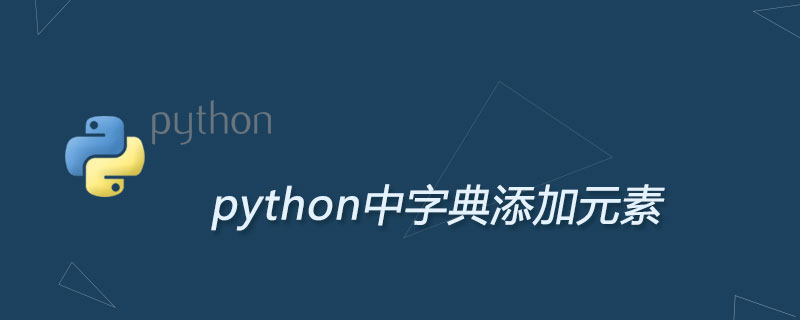Home > Article > Backend Development > How to add elements in python dictionary

When the key in the dictionary exists, you can access the value corresponding to the key in the dictionary through the dictionary name subscript. If the key does not exist, an exception will be thrown. If you want to add elements directly to the dictionary, you can add dictionary elements directly using the dictionary name subscript value. If you only write the key and assign the key value later, an exception will be thrown.
For example
Add one or more elements
d = {'a': 1}
d.update(b=2) #也可以 d.update({‘b’: 2})
print(d)
-->{'a': 1, 'b': 2}
d.update(c=3, d=4)
print(d)
-->{'a': 1, 'c': 3, 'b': 2, 'd': 4}
d['e'] = 5
print(d)
-->{'a': 1, 'c': 3, 'b': 2, 'e': 5, 'd': 4}
d.update({'f': 6, 'g': 7}) #即d.update(字典)
print(d)
-->{'a': 1, 'c': 3, 'b': 2, 'e': 5, 'd': 4, 'g': 7, 'f': 6}Delete one or more elements
x = {1: 2, 3: 4, 4: 3, 2: 1, 0: 0}
x.pop(1) #pop(),()里为需要删除的key值;即若x.pop(3),则删除3:4元素。
print(x)
-->{0: 0, 2: 1, 3: 4, 4: 3}
x = {1: 2, 3: 4, 4: 3, 2: 1, 0: 0}
del x[1]
print(x)
-->{0: 0, 2: 1, 3: 4, 4: 3}
def remove_key(d, key):
r = dict(d)
del r[key]
return r
x = {1: 2, 3: 4, 4: 3, 2: 1, 0: 0}
print(remove_key(x, 1))
print(x)
-->{0: 0, 2: 1, 3: 4, 4: 3}
-->{0: 0, 1: 2, 2: 1, 3: 4, 4: 3}The above is the detailed content of How to add elements in python dictionary. For more information, please follow other related articles on the PHP Chinese website!